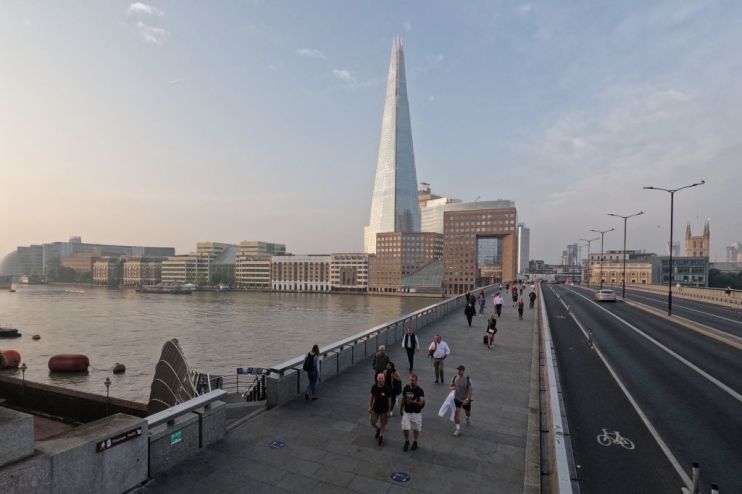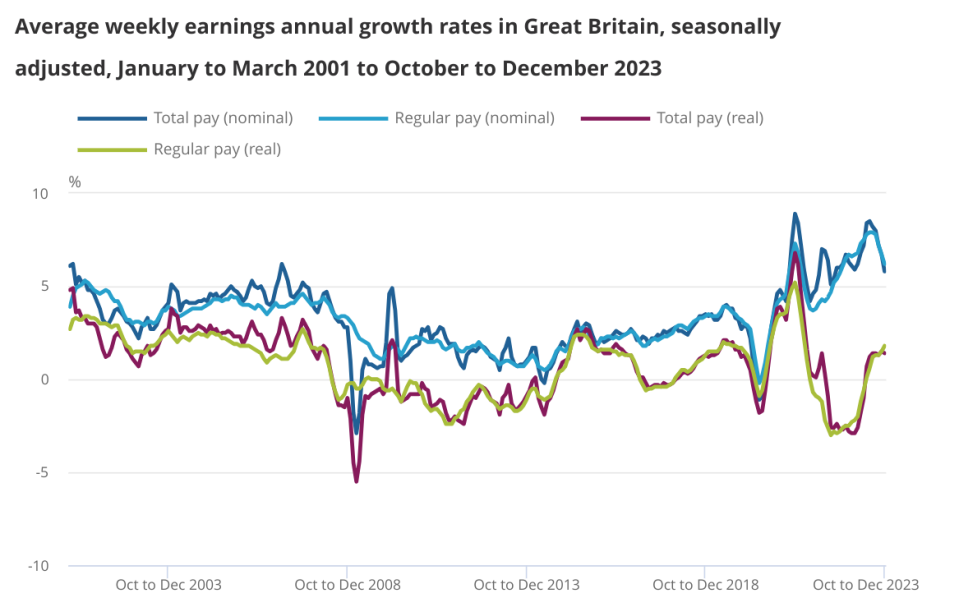Wage pressures ease again but beat Bank of England’s expectations

Wage growth came in above expectations at the end of last year in a sign that a tight labour market might keep inflationary pressures elevated in 2024.
Annual wage growth including bonuses averaged 5.8 per cent between October and December, according to figures from the Office for National Statistics (ONS).
This was down from last month’s upwardly revised figure of 6.7 per cent, although it was slightly above the 5.7 per cent expected by economists. It meant wage growth fell to its lowest rate in over a year.
Excluding bonuses, the figure was 6.2 per cent compared to the roughly 6.0 per cent predicted by experts and the Bank of England.
Taking into account inflation, regular pay increased 1.8 per cent, the highest level since summer 2019 excluding the pandemic.
“In cash terms, earnings are growing more slowly than in recent months, but in real terms they remain positive, thanks to falling inflation,” Liz McKeown, director of economic statistics at the ONS pointed out.

Chancellor of the Exchequer Jeremy Hunt said: “It’s good news that real wages are on the up for the sixth month in a row and unemployment remains low, but the job isn’t done”.
“Our tax cuts are part of a plan to get people back to work so we can grow the economy – but we must stick with it,” he continued.
Wage growth has fallen fairly quickly, having peaked at over eight per cent last summer, but policymakers argue it is still too high to be consistent with the two per cent inflation target.
The Bank’s most recent Monetary Policy Report suggested that there needed to be a “moderation in pay pressures” to bring down services inflation, a key gauge of domestic inflationary pressures.
Although today’s figures are still moving in the right direction, members of the Monetary Policy Committee will likely want to see further signs of progress particularly given the signs that unemployment is lower than previously thought.
According to the ONS’s latest estimates, which factor in the latest population survey, the unemployment rate fell to 3.8 per cent, down from 3.9 per cent in the previous quarter.
This meant the unemployment rate was lower than a year earlier despite the impact of the Bank of England’s rate hikes.
“Today’s figures did little to dispel the impression that the job market is very tight,” Sandra Horsfield, UK economist at Investec said.
The ONS cautioned that the figures should be treated with “additional caution” as the Labour Force Survey is still struggling with low response rates. Publication of the new Transformed Labour Force Survey, which will tackle the low response rates, has been delayed until September this year.
The inactivity rate meanwhile remained at 21.9 per cent, higher than its equivalent level last year. This was driven by a rise in long-term sickness.